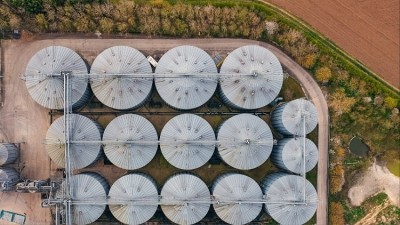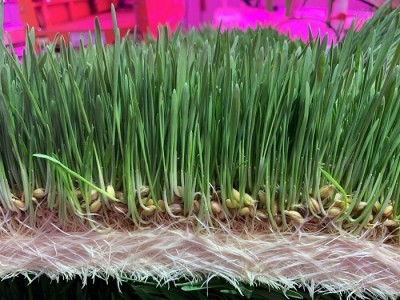Nutreco reveals switch to green electricity

It anticipates that this strategic move will slash the company’s scope 1 and 2 emissions by approximately 22%, equating to a reduction of around 90,000 tons of CO2 annually.
Presently, Nutreco facilities in eight countries, including Ecuador, Spain, Chile, Portugal, Turkey, Brazil, Germany, and Guatemala, already rely entirely on green electricity. The company aims to extend this practice to all its markets where renewable electricity options are available by the close of 2024. Priority regions for this transition include Norway, the US, Vietnam, China, and Canada.
Claudio Cervellati, Nutreco’s chief supply chain officer, commented: "While our foremost objective remains minimizing energy consumption, this transition to renewable electricity accelerates our transformative journey and amplifies our positive impact."
Solar panels and a biomass power
Other Dutch feed manufacturers have similar climate-smart goals.
Sustainability has been a longstanding priority for ForFarmers, with a key objective being to satisfy 50% of its energy requirements from alternative sources by 2025.
In addressing that goal, it has already made infrastructural shifts at its facilities, including at the Lochem plant, which features an array of solar panels and a biomass power plant fueled by local wood waste. In addition, its factory in Deventer is harnessing biogas from farming customers. Five dairy farmers contribute biogas generated from farm manure to power the factory's boiler, which in turn produces steam for pellet pressing, thereby displacing traditional natural gas sources.
This innovative approach is not limited to specific regions but extends across all markets where ForFarmers operates, Ad van Wesel, feed innovation expert at ForFarmers, told us in October 2022. Initiatives referenced then ranged from evaluating wind energy utilization in the UK to exploring solar panel installations on unused land within plant premises, while, in Poland, we heard that several projects focus on transitioning plants from coal to natural gas.
GHG emissions disclosure
Stefan van den Bogaard, group director of technology and investments at De Heus, outlined in a post how that animal feed group has been actively reducing its greenhouse gas (GHG) emissions since 2018, starting with a solar project in Mandalay, Myanmar.
'With the 2015 Paris Agreement targeting net-zero emissions by 2050 and the impending EU Corporate Sustainability Reporting Directive mandating GHG emissions disclosure, we are amplifying our efforts to communicate our reduction initiatives,' he added.
Addressing the challenge of reducing emissions in primary feed production processes, van den Bogaard explained that De Heus’ production involves both mash and pelleted feed. While mash feed solely requires electricity, pelleted and extruded feed necessitates both steam and electricity.
Although utilizing electricity alone for steam production is not presently economically viable, and local energy grid capacities sometimes fall short, solar panels could partially fulfill energy needs. However, constraints such as limited roof space and the importance of avoiding conflicts with agricultural land must be considered, he remarked.
Biomass offers an alternative to coal or gas for steam generation, yet availability and affordability vary between countries, van den Bogaard noted. Though he stressed how De Heus has successfully implemented rice husk as a biomass source in several feed mills, repurposing a byproduct that would otherwise be wasted.
Vietnamese project
De Heus has already deployed its own solar energy systems across various countries, including Spain, Portugal, Cambodia, and Myanmar, he added.
In a significant move, the company inked a memorandum of understanding in 2023 for a groundbreaking solar energy venture covering 30 facilities jointly owned by De Heus and Bel Ga in Vietnam. Expected to generate over 28 million kWh of clean energy annually, this project is projected to prevent more than 22,500 tons of carbon emissions per year, equivalent to the annual carbon dioxide absorption capacity of one million mature trees or offsetting emissions by 5,000 cars annually.








